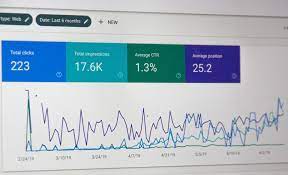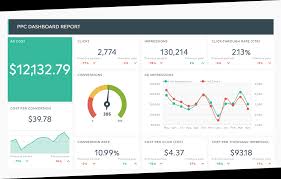The Power of SEO and SEM in Digital Marketing
Search Engine Optimization (SEO) and Search Engine Marketing (SEM) are two vital components of digital marketing strategies that can significantly impact the online visibility and success of a business.
SEO: Enhancing Organic Visibility
SEO focuses on optimizing a website’s content, structure, and back-end coding to improve its organic search engine ranking. By incorporating relevant keywords, creating high-quality content, improving site speed, and building authoritative backlinks, businesses can enhance their visibility in search engine results pages (SERPs).
Effective SEO practices not only drive more organic traffic to a website but also establish credibility and trust with both users and search engines. This long-term strategy requires continuous monitoring, analysis, and adaptation to keep up with ever-evolving search engine algorithms.
SEM: Driving Immediate Results Through Paid Advertising
In contrast, SEM involves paid advertising campaigns that appear on search engine results pages. This includes Pay-Per-Click (PPC) ads, display ads, shopping ads, and remarketing campaigns. SEM allows businesses to target specific audiences based on demographics, interests, behaviors, and keywords.
One of the key advantages of SEM is its ability to deliver immediate results. Businesses can create targeted ads that appear at the top of SERPs for relevant keywords, driving qualified traffic to their websites. With precise targeting options and real-time performance tracking, SEM provides valuable insights for optimizing ad campaigns for maximum ROI.
The Synergy Between SEO and SEM
While SEO and SEM serve distinct purposes in digital marketing, they are most effective when used together strategically. By integrating SEO efforts with SEM campaigns, businesses can maximize their online visibility across both organic and paid search results.
For example, using insights from PPC data can inform keyword targeting strategies for SEO content creation. Additionally, leveraging SEO-optimized landing pages can improve the quality score of PPC ads, leading to lower costs per click and higher ad placements.
In Conclusion
SEO and SEM are powerful tools that play complementary roles in enhancing a business’s online presence and driving targeted traffic to its website. By implementing a holistic digital marketing strategy that incorporates both SEO best practices and strategic SEM campaigns, businesses can achieve sustainable growth and success in the competitive online landscape.
Mastering Digital Marketing: Understanding the Essentials of SEO and SEM
- What does SEM refer to in SEO?
- What is the difference between SEO and SEM?
- What is the difference between SEO and SMM?
- What is SEO in digital marketing?
- What is SEM in digital marketing?
- Is Google Ads SEO or SEM?
What does SEM refer to in SEO?
In the realm of digital marketing, the frequently asked question “What does SEM refer to in SEO?” often arises when discussing search engine optimization (SEO) and search engine marketing (SEM). SEM, in the context of SEO, typically refers to paid advertising efforts that aim to boost a website’s visibility on search engine results pages (SERPs). While SEO focuses on optimizing a website’s organic visibility through content and technical enhancements, SEM involves strategies such as pay-per-click (PPC) advertising, display ads, and other paid tactics to drive immediate traffic and conversions. Understanding the distinction between SEM and SEO is crucial for businesses looking to leverage both organic and paid channels effectively in their digital marketing endeavors.
What is the difference between SEO and SEM?
One frequently asked question in digital marketing is, “What is the difference between SEO and SEM?” Search Engine Optimization (SEO) focuses on optimizing a website’s content and structure to improve its organic search engine ranking, driving more traffic through unpaid search results. On the other hand, Search Engine Marketing (SEM) involves paid advertising campaigns that appear on search engine results pages, providing immediate visibility through targeted ads. While SEO aims to enhance organic visibility over time, SEM delivers instant results through paid promotions. Both SEO and SEM play essential roles in a comprehensive digital marketing strategy, with SEO focusing on long-term organic growth and SEM offering immediate visibility and targeted traffic.
What is the difference between SEO and SMM?
In the realm of digital marketing, a common question that arises is the distinction between SEO (Search Engine Optimization) and SMM (Social Media Marketing). While SEO focuses on optimizing a website’s visibility in search engine results through organic strategies such as keyword optimization and content creation, SMM revolves around leveraging social media platforms to engage with audiences, build brand awareness, and drive traffic through paid and organic social campaigns. While both SEO and SMM aim to enhance online presence and reach target audiences, they operate on different platforms and employ distinct tactics to achieve their respective goals in the ever-evolving digital landscape.
What is SEO in digital marketing?
Search Engine Optimization (SEO) in digital marketing refers to the practice of optimizing a website’s content, structure, and technical elements to improve its visibility and ranking on search engine results pages (SERPs). By incorporating relevant keywords, creating high-quality content, enhancing user experience, and building authoritative backlinks, SEO aims to attract organic traffic and increase the site’s credibility with search engines. Effective SEO strategies help businesses achieve better online visibility, drive targeted traffic to their websites, and ultimately enhance their overall digital presence and performance.
What is SEM in digital marketing?
Search Engine Marketing (SEM) in digital marketing refers to the practice of utilizing paid advertising strategies to increase a website’s visibility in search engine results pages (SERPs). SEM encompasses various paid tactics, such as Pay-Per-Click (PPC) ads, display ads, shopping ads, and remarketing campaigns, allowing businesses to target specific audiences based on demographics, interests, behaviors, and keywords. SEM provides businesses with the opportunity to drive immediate traffic to their websites and achieve specific marketing goals through targeted ad placements on search engines. By leveraging SEM effectively, businesses can enhance their online presence, attract qualified leads, and ultimately improve their overall digital marketing performance.
Is Google Ads SEO or SEM?
The frequently asked question “Is Google Ads SEO or SEM?” often arises in discussions about digital marketing strategies. Google Ads, formerly known as Google AdWords, falls under the category of Search Engine Marketing (SEM). While SEO (Search Engine Optimization) focuses on optimizing a website’s organic visibility in search engine results, SEM encompasses paid advertising efforts to drive immediate traffic and visibility. Google Ads allows businesses to create targeted ads that appear at the top of search engine results pages, making it a powerful tool within the SEM umbrella for reaching specific audiences and driving conversions.






